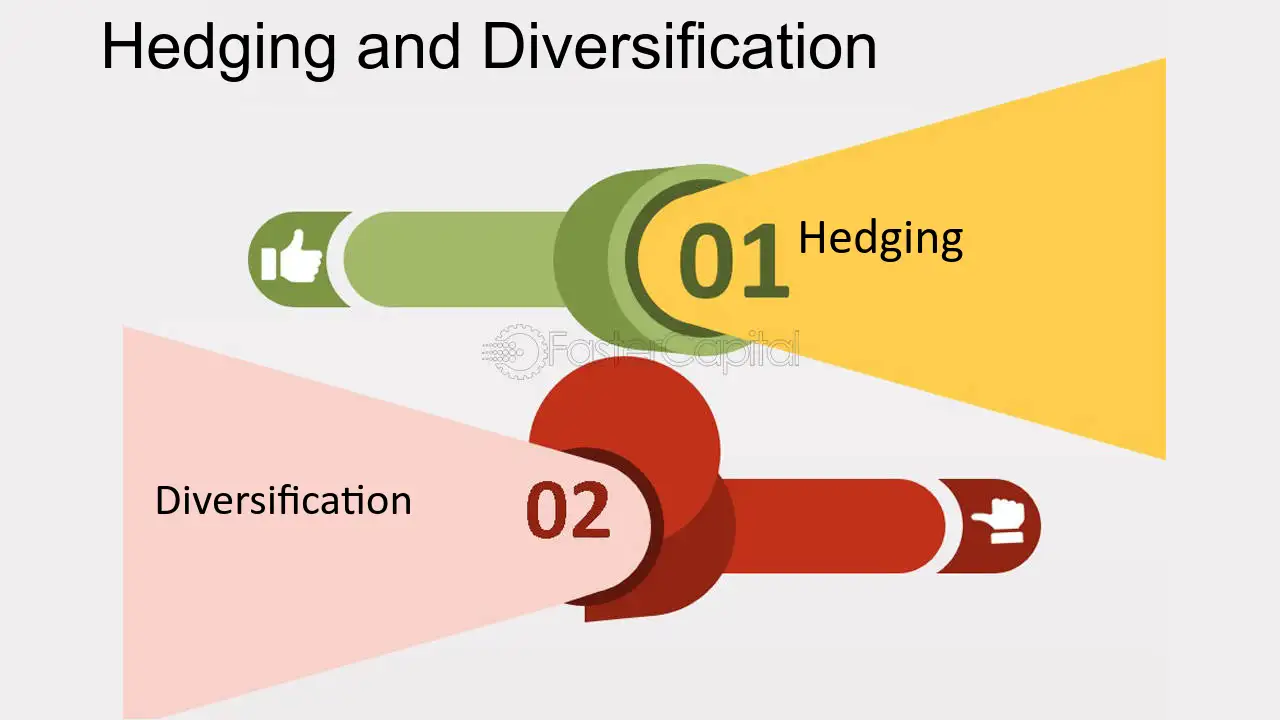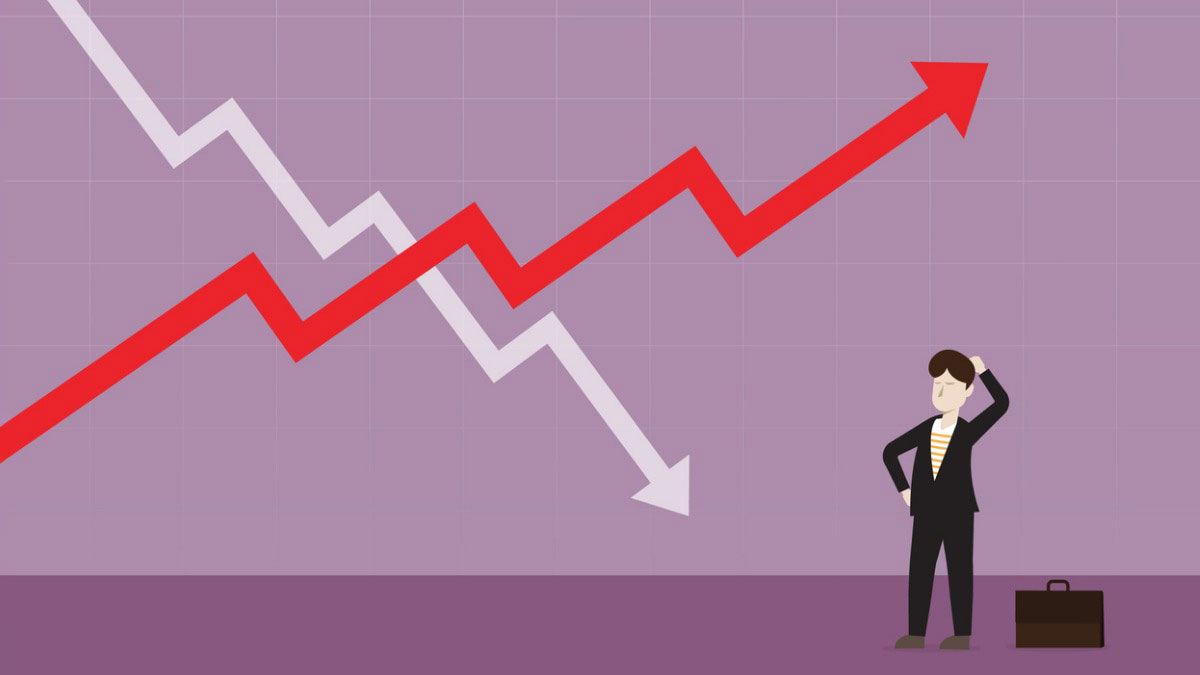When a stock market plunge strikes fear into the hearts of investors, knowing How to Shield Your Finances from a Stock Market Plunge becomes priceless. I’ll show you potent tactics to keep your finances secure when the market tumbles. Discover how making smart, strategic choices can fortify your portfolio against economic storms. From hedging and diversification to tactical plays and a solid long-term strategy, you’ll learn to navigate the uncertainties of investing with confidence. Let’s dive into the safeguards that can help you stand firm when Wall Street shakes.
Understanding the Importance of Hedging and Diversification
Diversifying Your Investment Portfolio to Minimize Risks
Let’s break it down, piece by piece. Diversifying means you spread your money out. Think of it like this: You wouldn’t just buy one kind of toy, right? Instead, you choose different ones. So if one breaks, you still have fun with the others. It’s the same with money. If you have different kinds of investments and one doesn’t do well, you’re not in big trouble. Your other investments can help balance things out.
Make sure to mix it up with stocks, bonds, and real estate. Mix in some cash too. And remember, different industries are key. Tech, health, and construction are all different types of industries. Put your money in several of these, and you’re on the right path.
The Role of Index Funds in Portfolio Stability
Now, let’s talk about index funds. These funds are like baskets that hold many stocks. When you buy a piece of an index fund, you own tiny parts of many stocks. Here’s why that’s cool: When one stock in the fund drops, others might do well. So, it keeps your money safer than if you just had one stock.
Index funds are easy to get and they cost less than hiring someone to pick stocks for you. They’re a smart way to play it safe because they copy parts of the market. When the market does well, your index fund usually does too.
In short, diversifying and using index funds are smart moves. They’re like having a sturdy umbrella in a heavy rain. They can help keep your money from getting soaked when the stock market storms hit.
Identifying and Implementing Defensive Strategies
Incorporating Defensive Stocks into Your Asset Allocation
When a market dives, you need a life jacket. Think of defensive stocks as one. These are stocks that give you steady gains, even when things get tough. They’re in businesses that keep on going, no matter what. Like food, power, and health care. People always need these, so these companies stay strong. It’s smart to have some defensive stocks in your mix. They can help keep your money safer when other stocks fall down.
To pick these stocks, look for ones with stable earnings, solid foundations, and good dividends. These traits help them stay tough when the wind blows hard. Make sure you check how they did in past drops. This tells you if they can truly stand tall in bad times.
The Necessity of an Emergency Fund in Economic Downturns
Money for a rainy day is key. When a storm hits the market, you’ll be glad you have it. An emergency fund is cash you save just in case things go wrong. It’s your backup plan when jobs are cut or big bills pop up out of nowhere. Having this money means you won’t have to sell your investments when their prices are low. That would lock in losses, which you don’t want.
Experts say to save up about three to six months of living costs. Put this money somewhere safe and easy to get to, like a savings account. Then, if you lose your job or have an urgent cost, you won’t have to worry. You’ll have the means to get by without touching your long-term investments.
To start, look at your costs and see how much you spend every month. Then, start saving a bit at a time until you hit your goal. It may seem slow, but even small amounts add up over time. Remember, it’s not if you’ll need it, it’s when.
Make sure your fund is just for real emergencies, though. It’s not for wants, it’s for needs. Keep it locked away, and let it be your shield when the rain pours down.
Tactical Moves During Market Volatility
Utilizing Stop-Loss Orders and the Benefits of Bonds
In rocky times, knowing a few smart moves can keep your money safer. One such move is setting stop-loss orders. Stop-loss orders sell your stock if it hits a low price you set. This can limit your losses. They’re like a safety net for each stock you own. When prices drop fast, your stocks sell before they sink too low.
Bonds are another key tool when stocks fall. They can balance your loses as they often rise when stocks fall. U.S. Treasury bonds are seen as very safe. They are backed by the government, so you can count on them even in hard times. As part of your defense, bonds help smooth the ride. They bring calm to your investment storms.
Recognizing Market Crash Indicators and the Value of Gold Investments
No one has a crystal ball to see stock crashes coming, but some signs can warn us. Sharp price drops and high trading volumes often signal trouble. Other hints are bad economic news and falling investor confidence. These can suggest a crash may be near. By keeping an eye out, you may spot risks early.
Gold shines when fear hits the market. It has held its value for thousands of years. In bad times, gold can protect your cash. Many see it as a safe place to park their dollars when the stock market is too scary. It does not follow stock moves too closely. This means it can stay stable or even go up when stocks tank.
Watching the signs and using tools like stop-loss orders, bonds, and gold can help you stand strong against market storms.
Ensuring Long-Term Financial Well-Being
The Importance of Regular Investment Rebalancing
In a market crash, your portfolio mix can get out of whack. This is where rebalancing helps. Rebalancing is bringing your investment mix back to your original plan. This might mean buying or selling assets to keep your risk level in check. Let’s say you aimed for a mix with 60% stocks and 40% bonds. If stocks drop, you might find yourself with more bonds than planned. That’s your cue to rebalance.
Studies show rebalancing can help smooth out your investment returns over time. That’s key during stock market chaos. Rebalancing forces you to buy low and sell high, which is the golden rule of investing. It makes sure you stick to your plan and don’t let market swings drive your choices. Stick to a schedule. Some experts say once or twice a year is enough.
Embracing a Long-Term Investing Mindset and Capital Preservation
During crashes, one might want to sell everything. But that’s often the wrong move. You need to think long term. A long-term mindset can shield you from making hasty decisions that harm your wealth. Remember, markets have always bounced back. If you sell in a crash, you lock in your losses. So, hold tight, and often, your investments will recover.
Capital preservation is another key term. It means protecting the money you have. You want to avoid big losses that can take years to make back. One way to do this is through diversification. Don’t put all your eggs in one basket. Spread your money across different investments like stocks, bonds, and others.
Another tool is defensive stocks. These are stocks in companies that provide things people always need, like food and power. They tend to do better when the market struggles because people keep buying these basics. This can help keep your portfolio steady during tough times.
You can’t predict crashes. But you can prepare. By checking on your investments regularly and thinking long term, you’ll stand a better chance of protecting your money. Remember to breathe and not get swept up in the panic. Building and keeping wealth is a marathon, not a sprint. Your future self will thank you for the calm and smart choices you make today.
In this post, we’ve walked through smart ways to shield your money — key moves to keep it safe no matter how rough the market gets. You’ve learned that mixing up your investments can cut down on risk. We also touched on how index funds can smooth out the ups and downs.
We talked about adding tough, reliable stocks to your mix and why it’s smart to have cash set aside for hard times. You now know how to use stop-loss orders and why bonds and gold can be your friends when the market gets shaky.
Last up, we covered the need to check on your investments often, making changes as needed to stay on track. And remember, it’s all about the long game — saving wisely, so you’ve got a strong stash of cash when you need it later.
Stick with these strategies, stay calm when the market jitters, and you’re on your way to a sure and steady financial future. Here’s to making money moves that last!
Q&A :
How can I safeguard my investments during a stock market downturn?
To protect your investments in the event of a stock market downturn, consider diversifying your portfolio beyond stocks, such as including bonds, commodities or real estate. Additionally, have a well-thought-out asset allocation strategy in place that aligns with your risk tolerance and financial goals. It’s also wise to keep an emergency fund and avoid making impulsive decisions based on market fluctuations.
What strategies should I implement to minimize losses in a bear market?
In a bear market, strategies like dollar-cost averaging, where you consistently invest a fixed amount of money over time, can help mitigate risks. Investing in defensive stocks, which tend to be more stable during economic downturns, is another viable strategy. Furthermore, using stop-loss orders can help sell off assets before incurring more significant losses.
Are there specific signs of an impending stock market crash?
While predicting a stock market crash is not precise, certain indicators can suggest the potential for a downturn. These include excessively high valuations, rising interest rates, high levels of margin debt, significant geopolitical tensions, or economic indicators pointing to a recession. Staying informed about financial news and market trends can help investors recognize warning signs.
How important is risk management before a stock market crash?
Risk management is crucial in preparing for a stock market crash. It involves setting clear investment objectives, understanding the risk-reward ratio, and adopting strategies to mitigate potential losses. Regularly reviewing and adjusting your portfolio to ensure proper diversification is also a key aspect of risk management.
Can investment in gold or other precious metals shield me from a stock market crash?
Investing in gold or other precious metals can offer a hedge against a stock market crash because they typically have an inverse relationship with equities. When stock prices fall, gold prices often increase, which can balance or reduce overall portfolio losses. However, it’s essential to consider that these investments come with their own risks and may not fully protect you from loss.


